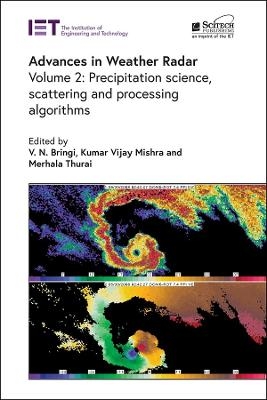
Advances in Weather Radar
Institution of Engineering and Technology (Verlag)
978-1-83953-624-3 (ISBN)
After nearly 50 years of sustained research and 30 years of operational deployment, research in weather radars has witnessed tremendous growth over the past decade and is now spilling over to novel applications and geographies. This book provides a systematic and thorough review of advances in research, developments, and technologies in the field.
A truly comprehensive collection in 3 volumes, Advances in Weather Radar has been developed by three expert editors and written by senior researchers from academia, research laboratories, and national weather agencies. Every chapter has been reviewed by the editors and an external reviewer to ensure quality and accuracy.
The key elements for understanding weather radar are covered, from the fundamental science and engineering to signal processing, electromagnetics, and applications. Special attention is given to dual-polarization radar because of its important applications in rainfall measurement, in elucidating details of cloud physical processes, classification of meteorological and non-meteorological echo types, the validation and evaluation of bulk microphysical schemes that predict number density and mixing ratio, and radar hydrology among other more recent applications.
Volume 1: Precipitation sensing platforms begins with a historical overview of the last decade focusing on the key technical and scientific ideas that have propelled the field forward, and goes on to address major advances in designing, operating, and deploying weather radars across the globe. Volume 2: Precipitation science, scattering, and processing algorithms considers theoretical milestones achieved in microphysics, electromagnetics, and signal processing of radar meteorology. Volume 3: Emerging applications includes applications of weather radars in novel as well as non-meteorological applications.
These edited volumes are intended to be useful to graduate students, radar systems designers, high-level managers of national meteorological services, and other research scientists who need to delve deeper into specific topics that cannot be found elsewhere.
V.N. Bringi is an emeritus professor at Colorado State University, USA. He received his PhD from The Ohio State University, then joined the faculty at Colorado University where he spent his entire career. He is a fellow of the American Meteorological Society (AMS) and recipient of the AMS Remote Sensing Prize in 2013. Kumar Vijay Mishra is a senior fellow at the United States DEVCOM Army Research Laboratory. He received his PhD in electrical engineering and MS in mathematics from The University of Iowa, Iowa City. He is the recipient of many best paper awards and fellowships including the IET Premium Award for Best Paper (2021), US National Academies ARL Harry Diamond Distinguished Fellowship (2018), and Andrew and Erna Finci Viterbi Postdoctoral Fellowship (2015-2017). Merhala Thurai is a research scientist at Colorado State University, USA. She received her BSc in Physics from Imperial College, London, and her PhD from King's College, London. She worked at Rutherford Appleton Laboratory, Oxon, UK, for 14 years, and has been with Colorado State University since 2004.
Chapter 1: Phased array weather radar developed in Japan
Chapter 2: Weather radar data calibration and monitoring
Chapter 3: Scattering by snow particles
Chapter 4: Radar and hail: advances in scattering, detection, and sizing
Chapter 5: Understanding the role of rain drop shapes and fall velocities in rainfall estimation from polarimetric weather radars
Chapter 6: The raindrop size distribution - the unknown that holds everything together
Chapter 7: Fusion of radar polarimetry and atmospheric modeling
Chapter 8: End-to-end simulations of dual-polarization tornado debris signatures
Chapter 9: Satellite combined radar-radiometer algorithms
Chapter 10: Weather radar measurements in Antarctica
Chapter 11: Radar advances related to severe weather
Chapter 12: Deep-learning-aided rainfall estimation from communications satellite links
| Erscheinungsdatum | 03.02.2024 |
|---|---|
| Reihe/Serie | Radar, Sonar and Navigation |
| Verlagsort | Stevenage |
| Sprache | englisch |
| Maße | 156 x 234 mm |
| Themenwelt | Technik ► Nachrichtentechnik |
| ISBN-10 | 1-83953-624-1 / 1839536241 |
| ISBN-13 | 978-1-83953-624-3 / 9781839536243 |
| Zustand | Neuware |
| Haben Sie eine Frage zum Produkt? |
aus dem Bereich


